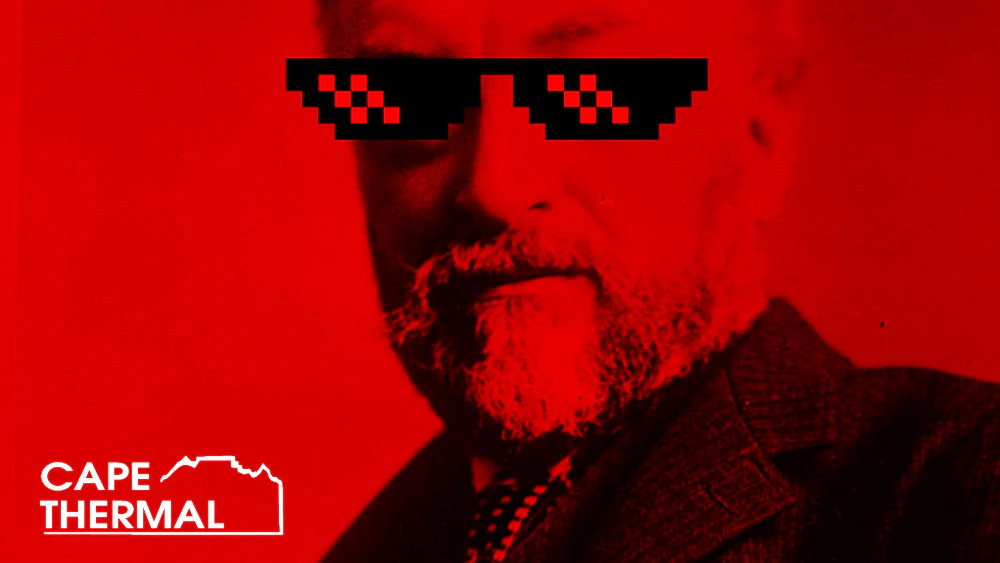
Samuel Pierpont Langley and the Bolometer: The Origins of Thermal Imaging
Background
In the field of thermal imaging, the name Samuel Pierpont Langley stands tall. This renowned American physicist, born in 1834, left an indelible mark in the annals of infrared and heat radiation studies. His legacy includes the groundbreaking invention of the bolometer, a device that paved the way for modern thermal imaging systems.
The Bolometer
The bolometer, developed in the 1870s, was the first functional instrument capable of detecting and quantifying infrared radiation. It utilized the principle that the electrical resistance of a thin strip of metal changes with temperature variations. This ingenious mechanism allowed for the conversion of infrared radiation - essentially heat emissions from objects - into measurable electrical signals.
Langley's bolometer boasted impressive sensitivity. It could detect temperature changes as minuscule as one hundred-thousandth of a degree Celsius. Remarkably, this device could even identify thermal radiation from a cow more than a quarter of a mile away!
Impact on the development of Thermal Imaging
Langley's invention revolutionized the burgeoning field of thermal imaging, granting researchers the tools needed to quantify and analyse infrared radiation. But its impact wasn't limited to just thermal imaging. Langley himself employed the bolometer in his solar physics studies, making substantial contributions to the field of astronomy.
The bolometer's groundbreaking design formed the foundation for further innovations, including the development of efficient infrared detectors like microbolometers and thermocouples. Its principle continues to influence many modern thermal imaging technologies, comprising the core of devices used in various sectors from security, outdoor pursuits, and hunting to scientific research and building inspections.
Samuel Pierpont Langley's contributions helped shape the future of thermal imaging. His pioneering work with the bolometer fuelled the evolution of thermal imaging, eventually leading to the highly sophisticated, user-friendly, and compact thermal imaging devices we see today.
These advances have allowed thermal imaging to move beyond strictly scientific or military applications. Today, thermal imaging technology plays a pivotal role in various civilian sectors. It's used for building inspections to identify heat losses, in medicine for diagnostic purposes, in fire fighting to see through smoke, and even in wildlife research for animal detection.
Cape Thermal product offering
Here at Cape Thermal, we're proud to stand on the shoulders of giants like Samuel Pierpont Langley. We continue to innovate in thermal imaging, developing cutting-edge solutions for thermal imaging in South Africa and beyond. Whether you're searching for thermal imaging for security, thermal imaging for wildlife observation, or thermal imaging for hunting, Cape Thermal is dedicated to bringing you the best in thermal imaging technology.
-
Handheld Thermography Cameras: These handheld devices offer powerful thermal imaging capabilities for diverse applications.
-
Smartphone Thermal Cameras: Transform your smartphone into a thermal imaging device and explore the unseen world of heat patterns.
-
Thermal Imaging Device Accessories: Amplify your thermal imaging capabilities with our extensive selection of accessories.
-
Thermal Imaging Binoculars: Experience the power of dual-eye thermal viewing for enhanced depth perception and detailed imagery.
-
Thermal Imaging Monoculars: Discover the convenience and versatility of single-eye thermal viewing in a compact form factor.
We understand that every customer's thermal imaging requirements are unique. That's why we invite you to contact us for specific needs that include:
-
Thermal Imaging Rifle Scopes and Thermal Imaging Clip-On Attachments: Ideal for hunting and vermin control, offering clear, precise imaging for accurate targeting.
-
Vehicle Mounted PTZ Thermal Cameras: For seamless, continuous thermal monitoring in mobile applications.
-
Fixed Thermal Cameras: Perfect for fire detection, industrial process condition monitoring, and security. Ensure preventative maintenance and safety with the always vigilant eye of thermal imaging.
As The Thermal Imaging Authority, we are committed to bringing you the best in thermal imaging technology and services. Cape Thermal is your trusted partner for thermal imaging in South Africa, guiding you through the incredible realm of infrared technology and its myriad applications.
Explore our offerings today and experience the power of sight beyond the visible spectrum. Experience thermal imaging, the Cape Thermal way.




